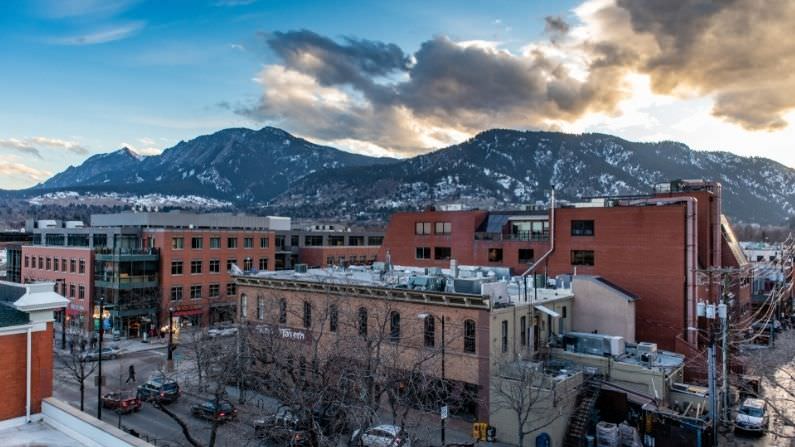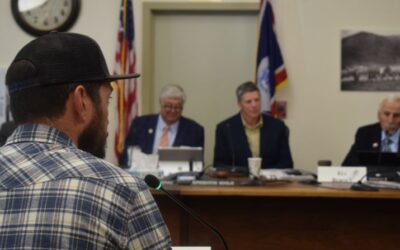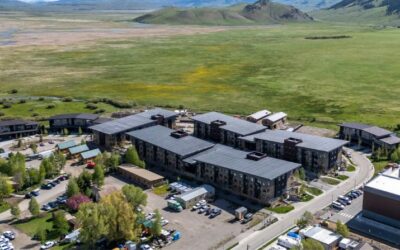Ed Levy dreamed of living in Boulder for years, often taking 80-mile round trip drives to visit the city. When she underwent a few major life changes, she decided it was time to move there. The question then became how to afford living in Boulder, a city notorious for few housing options and a high cost of living.
Around that time, Kurt and Krista Nordback were building an accessory dwelling unit, or ADU, in their north Boulder backyard. One lucky day, with the ADU almost finished, Kurt was standing outside right as Levy drove by. Levy was thrilled.
“So, I found him outside, and I approached him, and one thing led to another and here I am,” Levy said.
With Boulder’s limits on both upward and outward growth, adding housing options means filling in the gaps between existing units. Accessory dwelling units can do that, countering the dual crises of housing affordability and availability, while generally following the aesthetics and amenities of the city. As a secondary dwelling unit to a main house, an ADU has all the components of any other residence, including a kitchen, bathroom and sleeping quarters. ADUs can be attached to the main dwelling, such as in a basement or above a garage, or detached, often in the backyard.
The Nordbacks have lived in Boulder on and off for their whole lives. But Kurt said his family wouldn’t be able to move here today given the high cost of living and minimal housing options.
“We do a pretty good job of creating deed-restricted, income-qualified, affordable housing, and we do a pretty good job of building 4,000 square foot mansions,” Nordback said. “And we don’t do a good job of filling in the middle. And we haven’t done that for a long time.”
The size of an ADU can vary in Boulder, with both detached and attached ADUs up to 1,000 square feet, depending on if they are zoned as permanently affordable units or if they are in a historic district.
Some people may be skeptical about downsizing from a traditional house to a unit a third of that size. But for many others, the space fits their lifestyle perfectly. Since moving to Boulder in December, 80-year-old Levy spends much of her time out and about, often walking her Bernese mountain dog Rupert. She came out as queer earlier this year and is enjoying making friends with other LGBTQ folks in the area. It’s a time of rebirth for her.
“This is the perfect place for me,” Levy said. “I go out, I go to events. So, I’ve got a new life.”
The City of Boulder did loosen some of its ADU regulations in 2018, including allowing more ADUs to be built near one another. There’s no clear way to tell the maximum capacity for ADUs in Boulder, but city officials say that there’s still potential to build before most neighborhoods become saturated.
Some advocates would like to see even more flexibility in the rules, as well as a faster approval process. But change is coming. Since 2018, more than 200 ADUs have been built or greenlit for construction, about one-third of which are designated as permanently affordable. For perspective, in the first 35 years ADUs were allowed in Boulder, there were just 231 built.
Nordback thinks Boulder will likely always have some degree of exclusivity. But he said everyday homeowners can help make it more affordable and inclusive by choosing to build an ADU.
“It’s a great feeling to know that we’re now housing an additional person on our lot who otherwise would not be able to live there,” Nordback said. “And we have another neighbor, and it’s great.”
The ADU model is one of the more sustainable and affordable ways for a city like Boulder to innovate its housing options, especially as climate change grows more urgent. That’s according to ml Robles, a Boulder-based architect who focuses on building ADUs.
Both an attached ADU and one that stands separately from the main house can tap into existing utility lines, and a small space like an ADU can be more efficient with its surrounding environment. This can also mean cheaper utility bills for tenants, even those who rent an ADU at market rate. But an ADU can be more than just an eco-friendly box.
“Oftentimes, an ADU looks just like a condo or an apartment, and my goal is no, these are little houses. And you need to have that benefit,” Robles said. “You could have a garden.”
Boulder is leading the charge in ADU development, but other cities have joined the bandwagon too. Nearby in Denver, rezonings of entire neighborhoods may make it easier for potential ADU owners to get approved to build. And a law just signed in California allows for lots currently zoned as single-family to build up to three more dwelling units on the same land.
But the ADU model is not a silver bullet. If the main house’s owner chooses to sell, the ADU renter may need to find another place to live if they can’t sign a new lease with the next owner.
To be sure, no one housing strategy will entirely fix the dual housing crises of affordability and availability that plague Boulder and many other cities. But accessory dwelling units are one tool in the kit that many hope will be more useful in the coming years to ensure Boulder can welcome people from a wide variety of backgrounds, including Levy.
“No retirement home for me. I have a lot of things to do,” Levy said. “I’m considering buying a horse. So, there’s a bunch of things on my agenda for the future.”
This story is part of a collaboration between the Solutions Journalism Network and Rocky Mountain Community Radio highlighting affordable housing solutions across the Mountain West.





